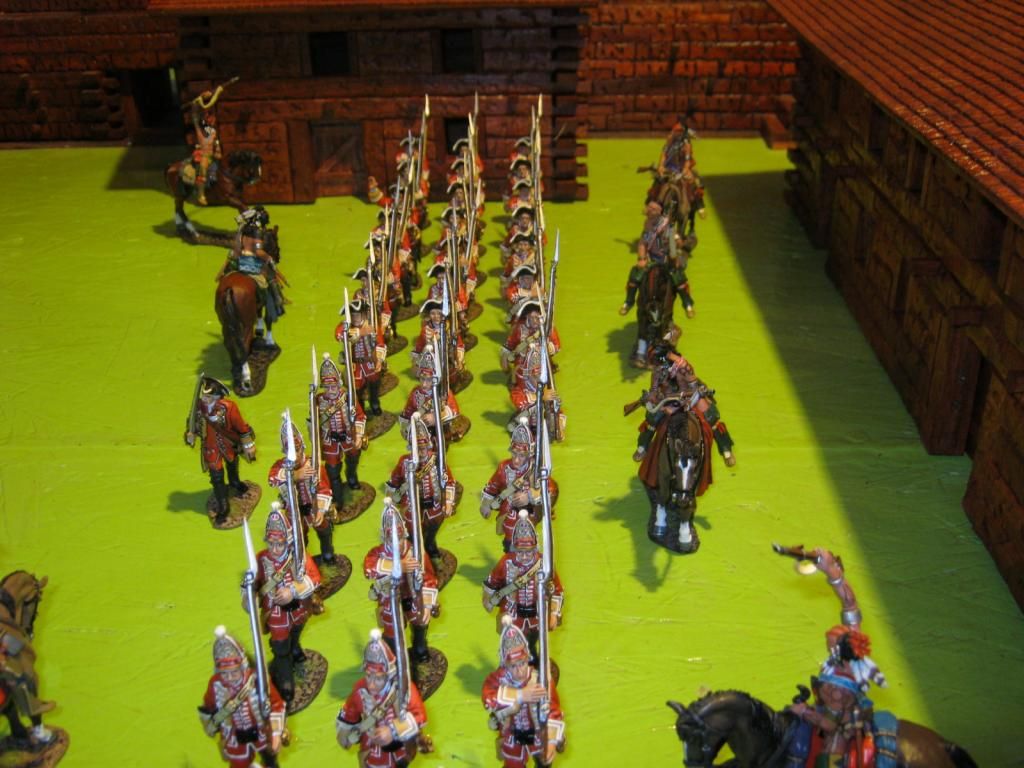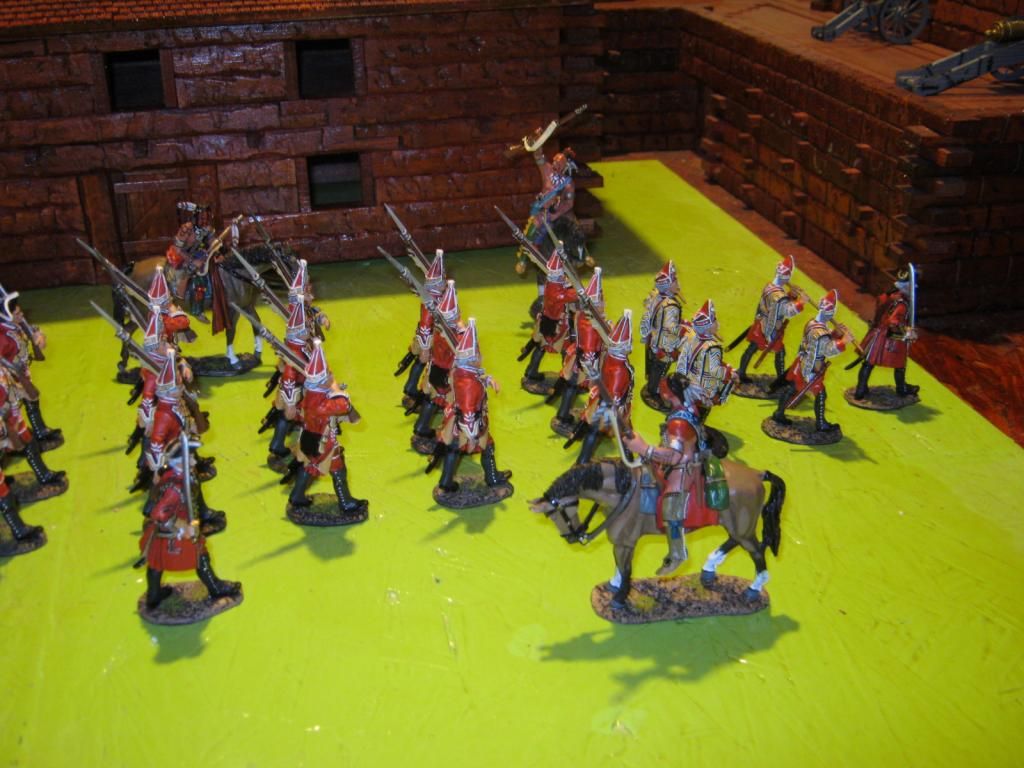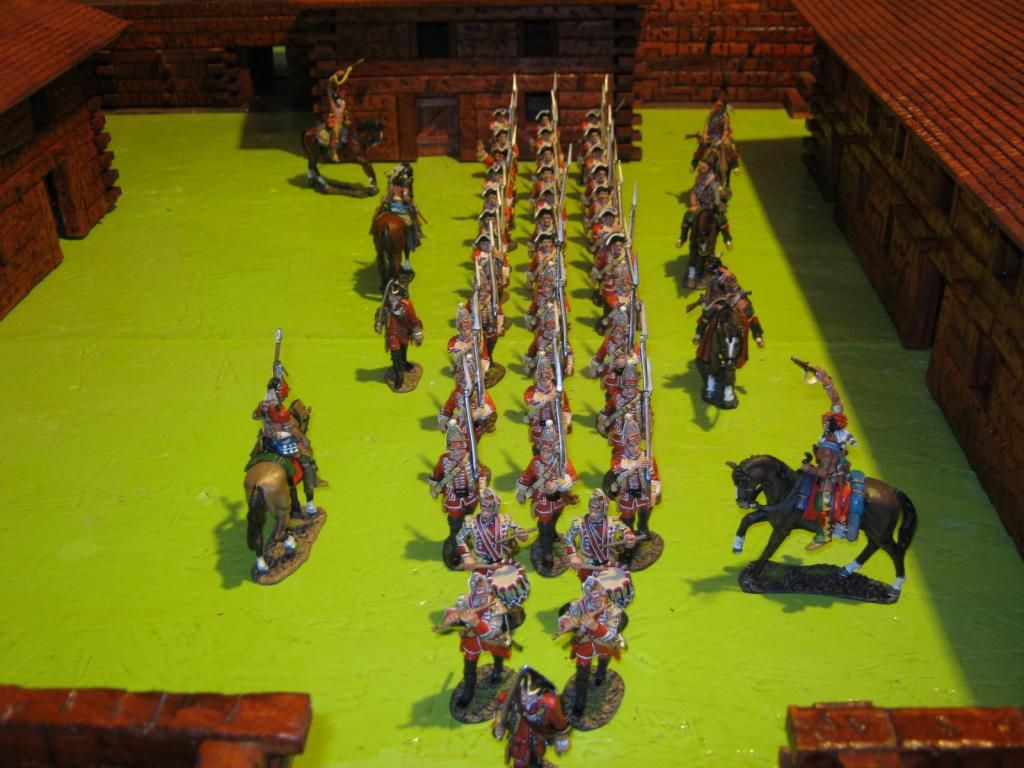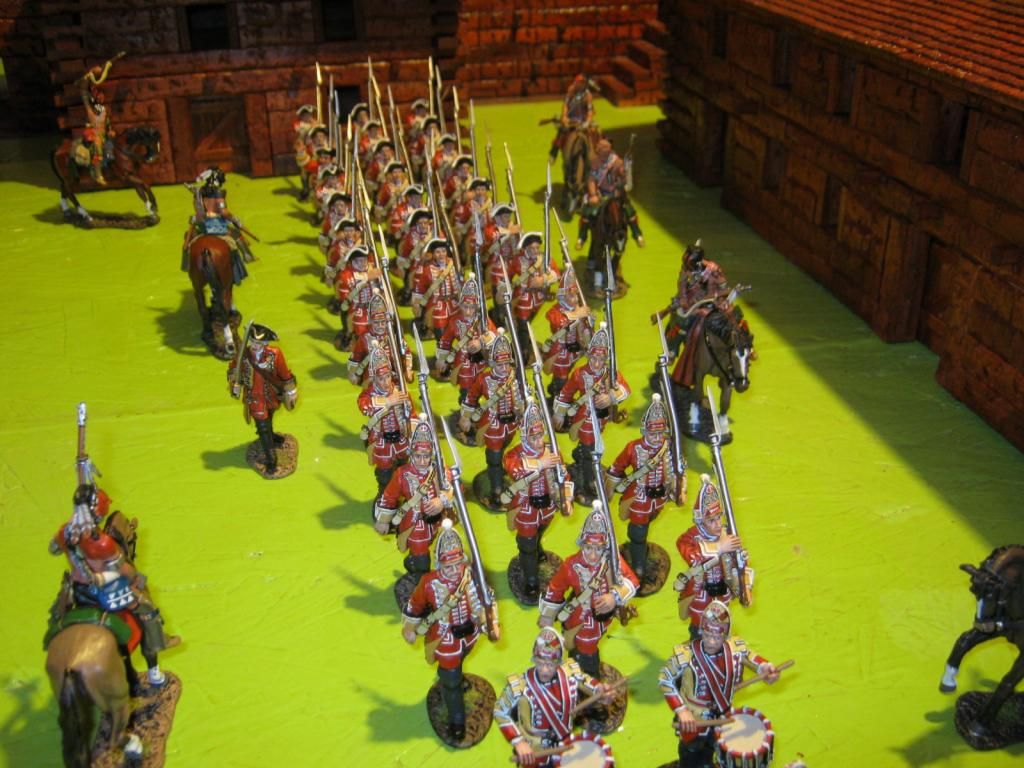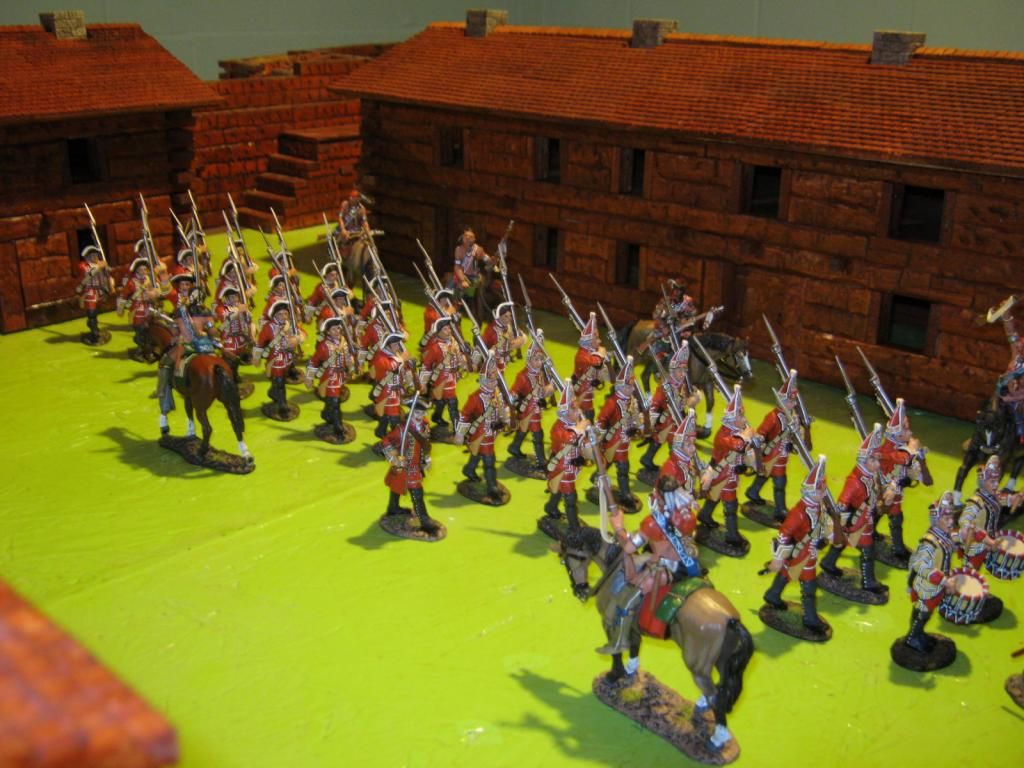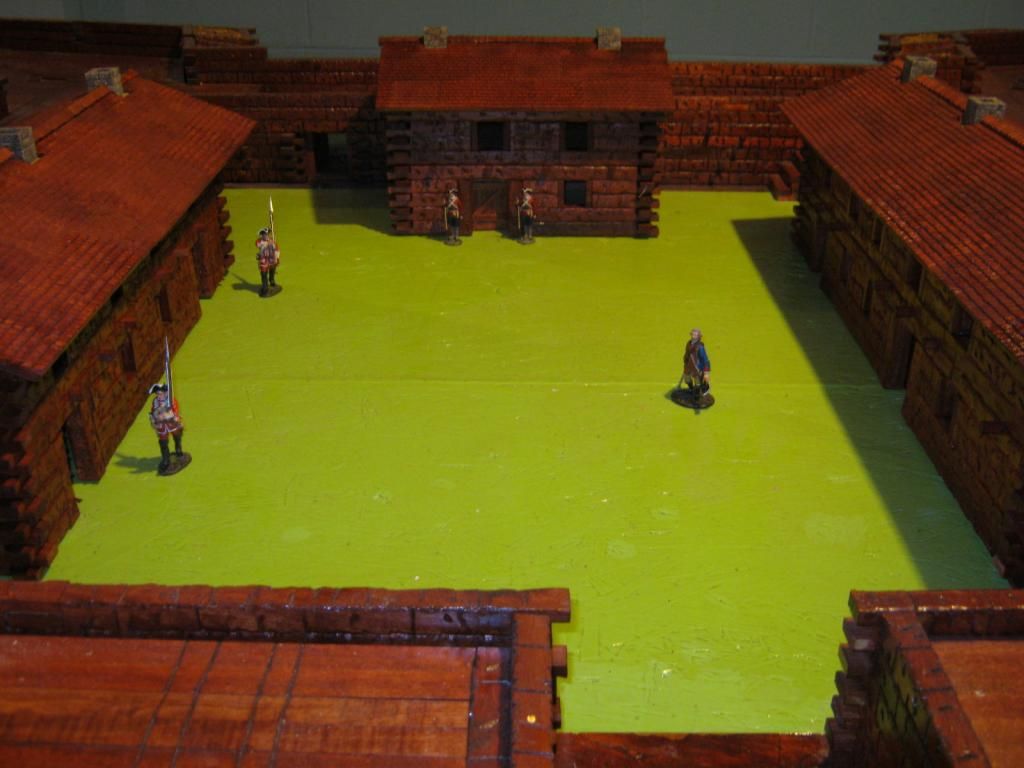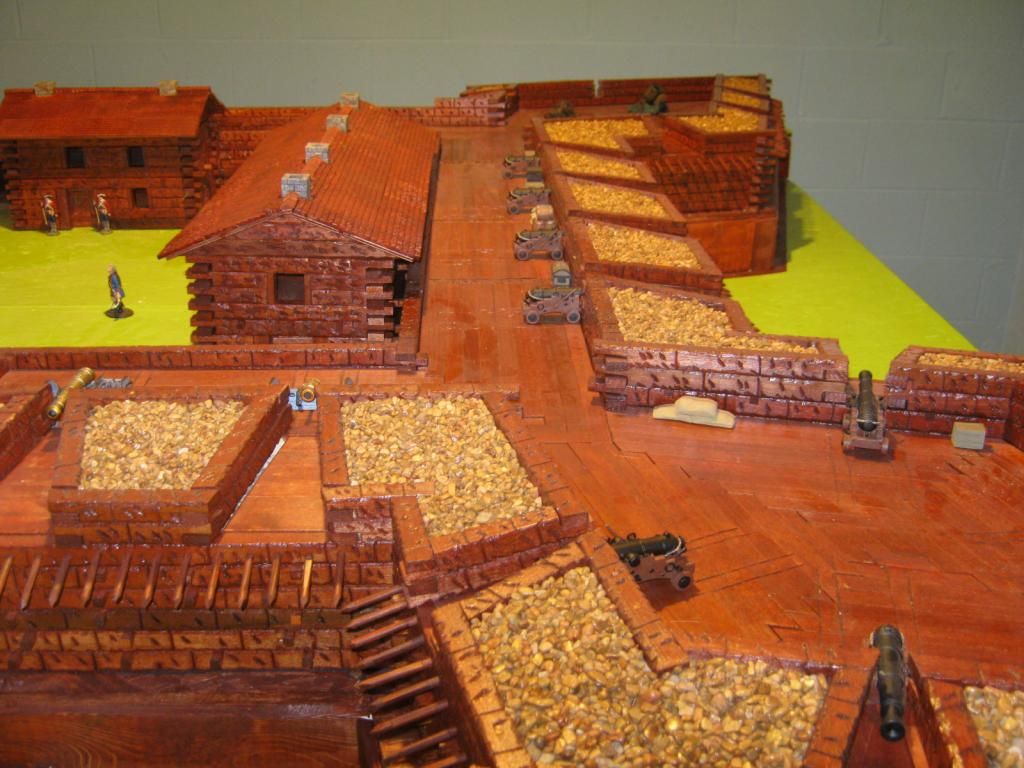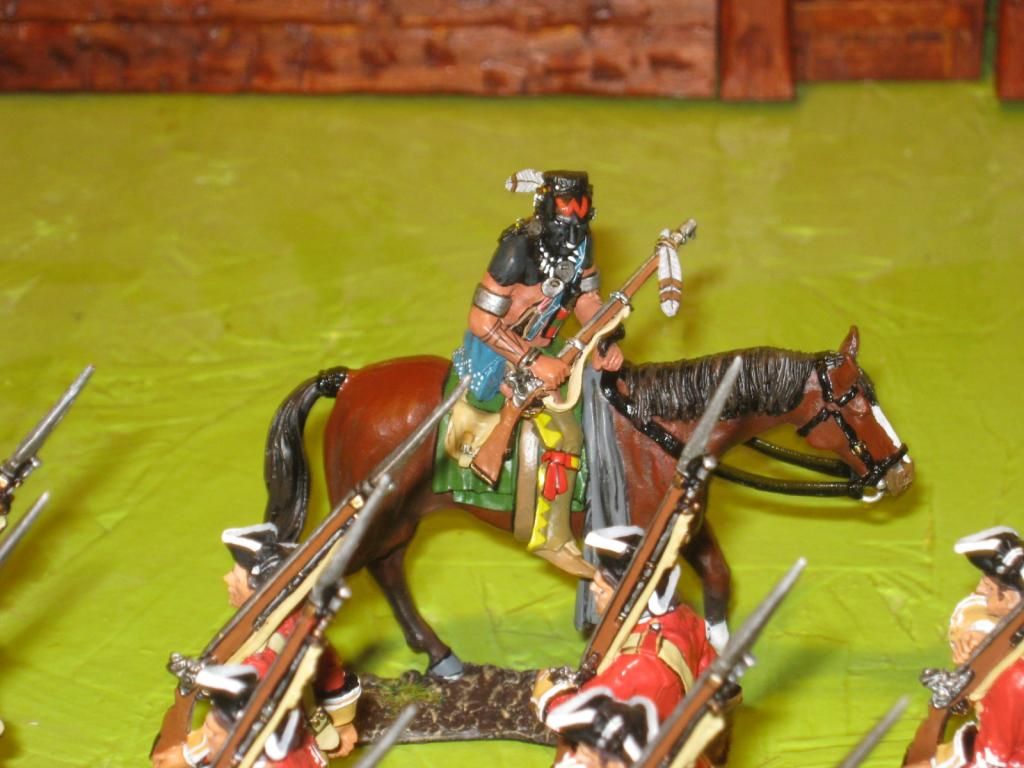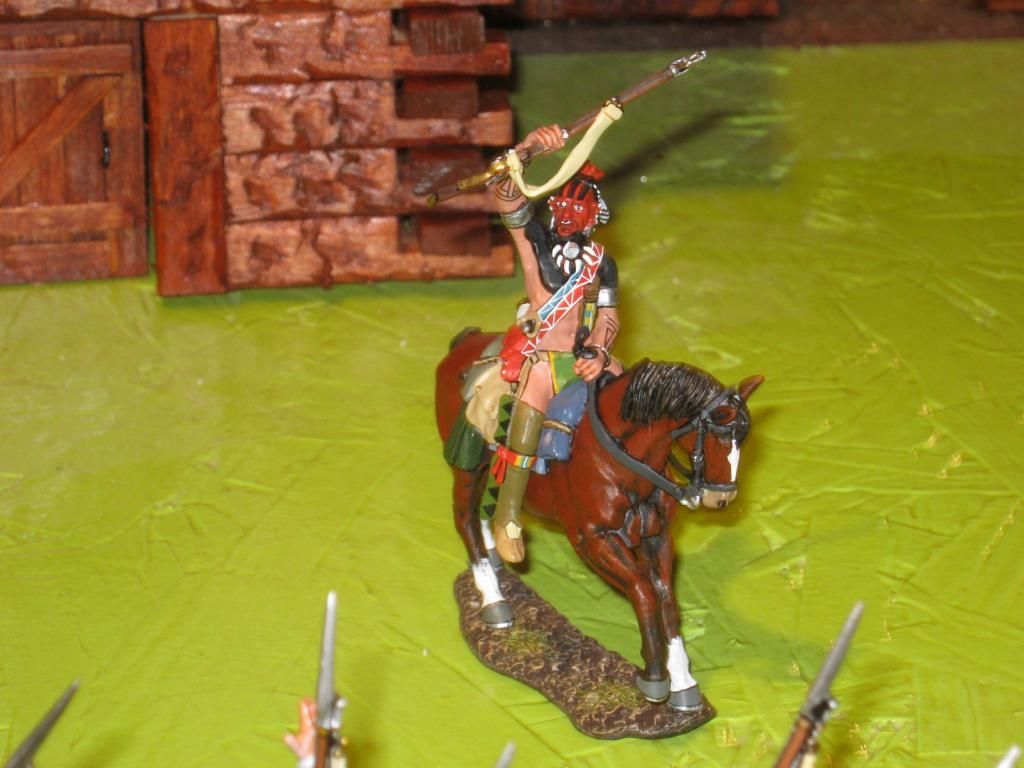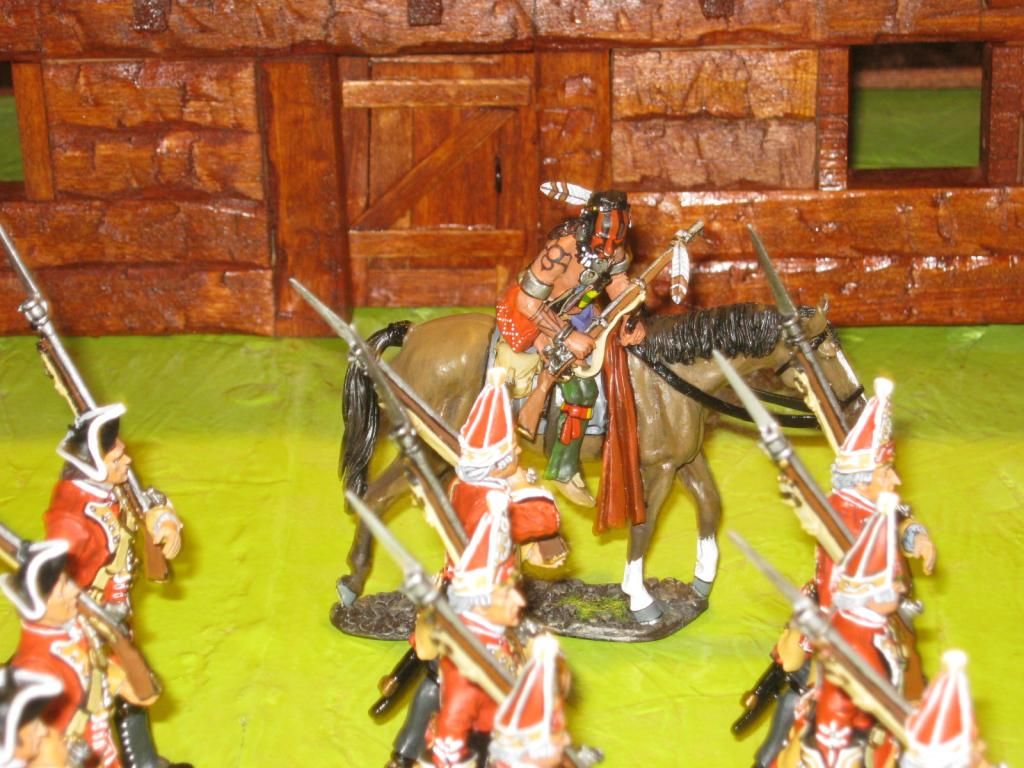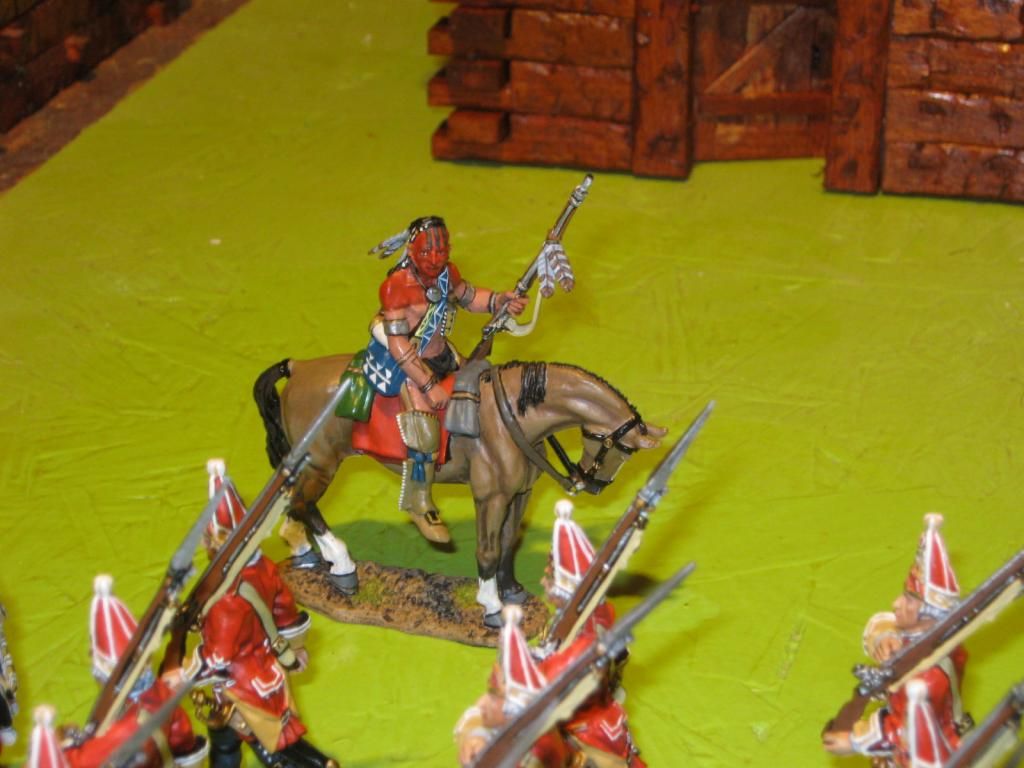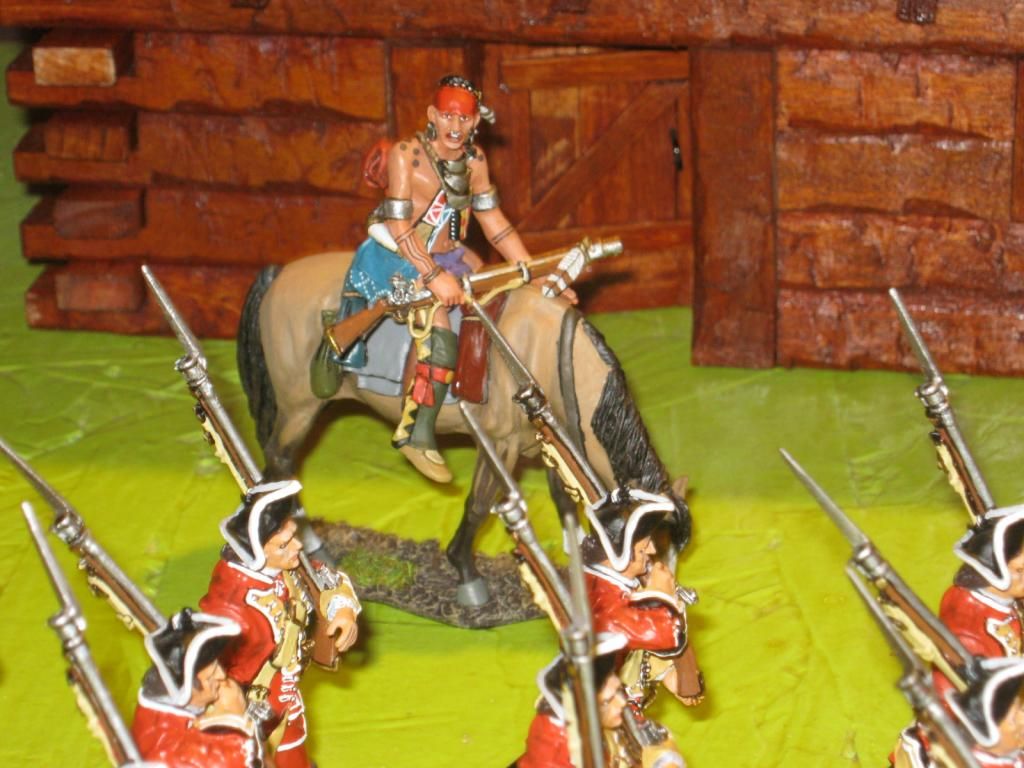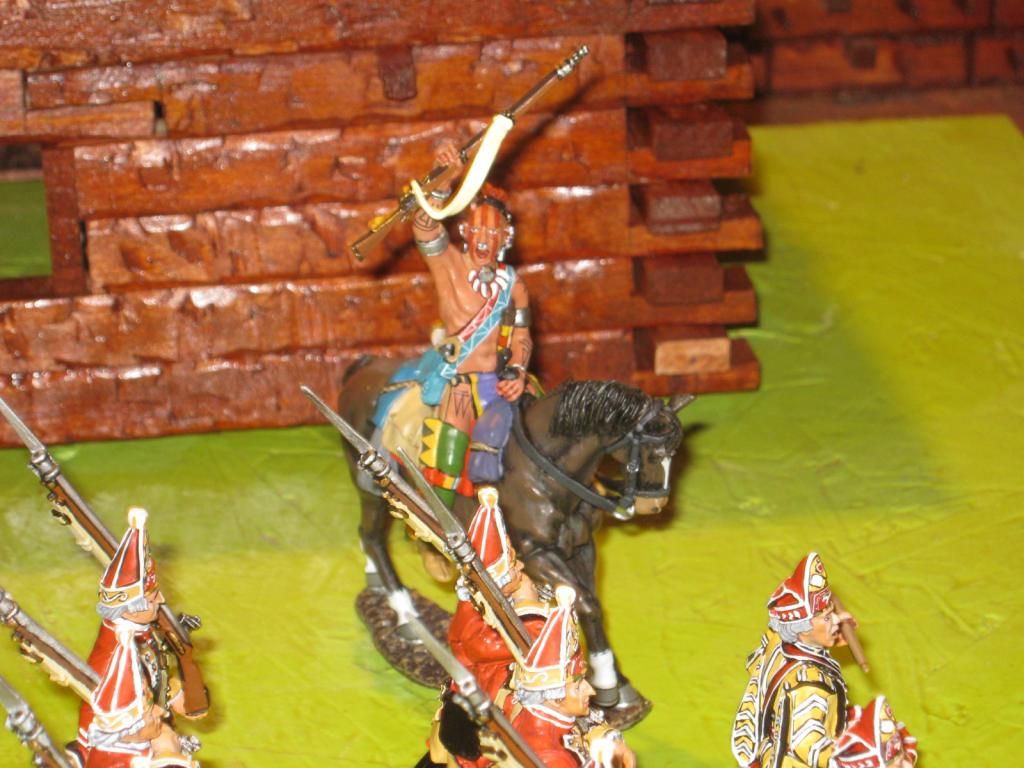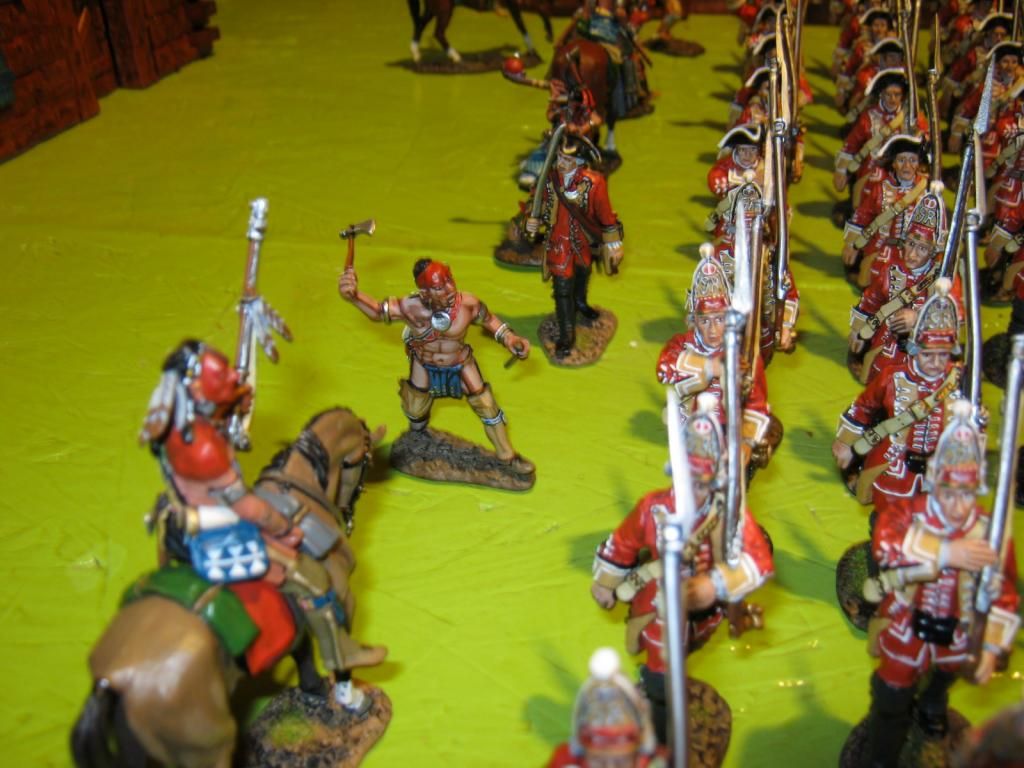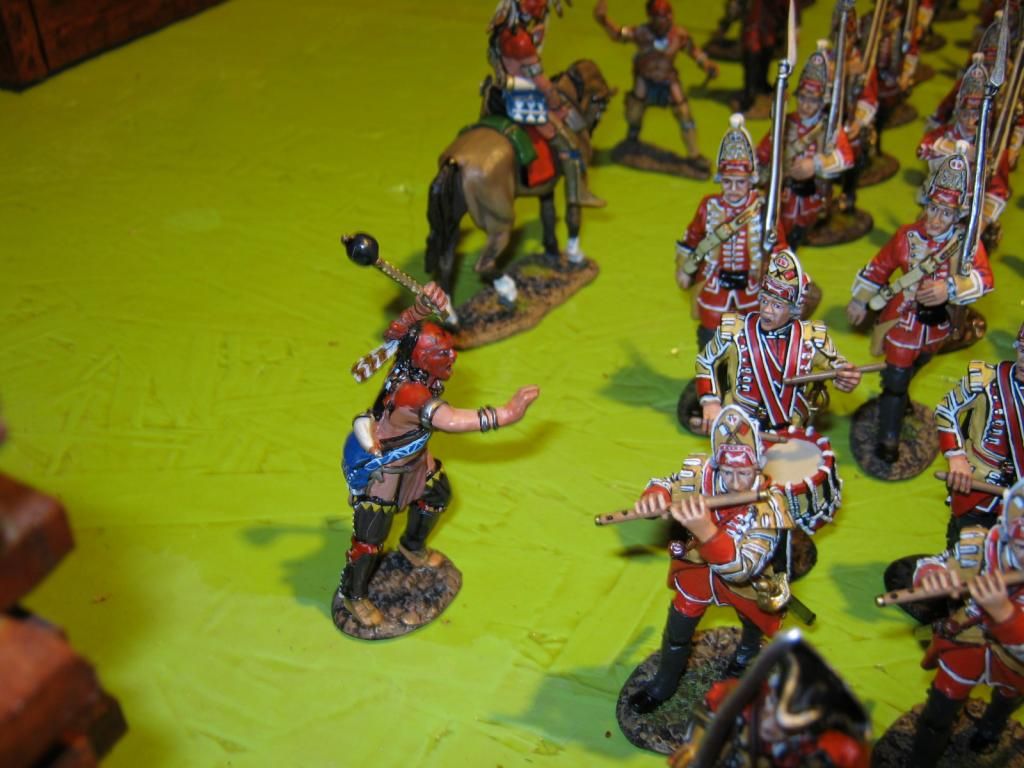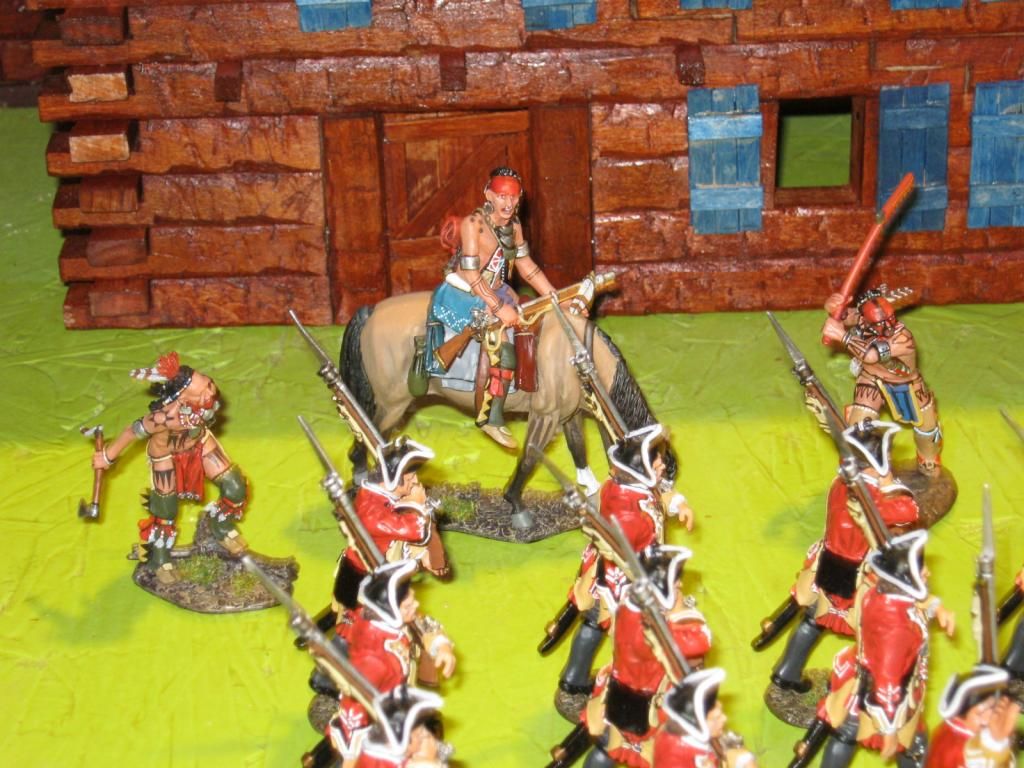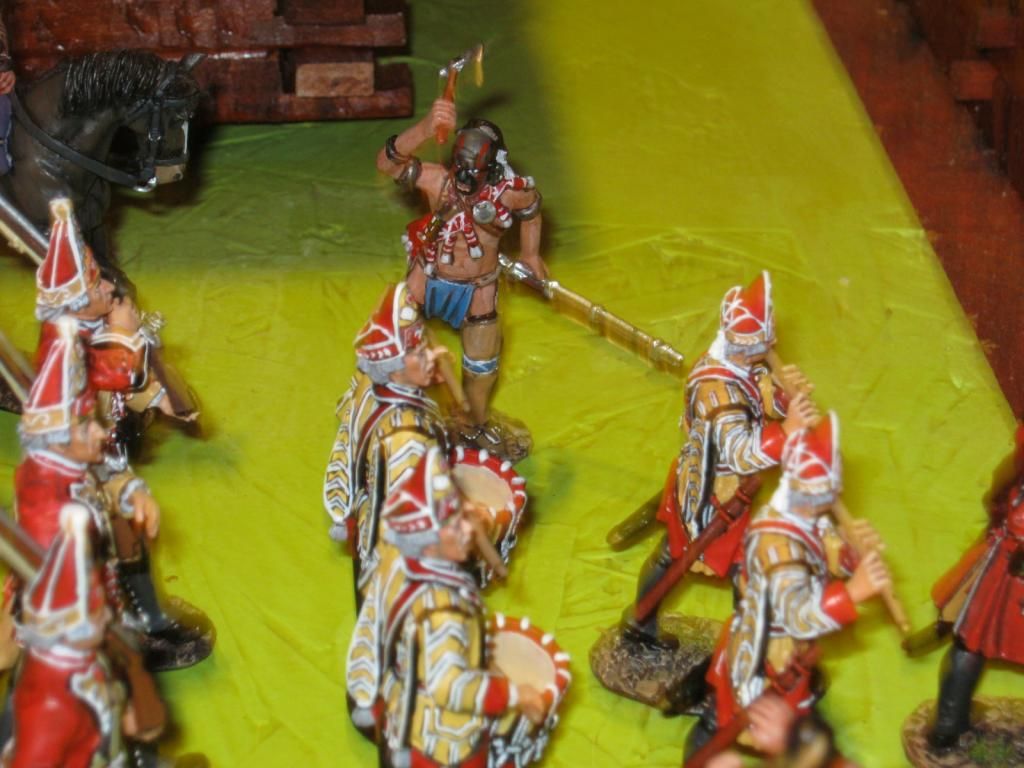You are using an out of date browser. It may not display this or other websites correctly.
You should upgrade or use an alternative browser.
You should upgrade or use an alternative browser.
35th Regiment at FWH (1 Viewer)
- Thread starter Fraxinus
- Start date
29 Let's Go
Sergeant Major
- Joined
- Mar 13, 2011
- Messages
- 1,669
Re: #5th Regiment at FWH
Nice use of your mounted Indians harassing the British. You must be having a lot of fun with Fort William Henry. What a great looking fort.
Steve
Nice use of your mounted Indians harassing the British. You must be having a lot of fun with Fort William Henry. What a great looking fort.
Steve
REVWARBUFF
Sergeant Major
- Joined
- Jan 17, 2006
- Messages
- 1,998
Re: #5th Regiment at FWH
Love it Ken!!! Great use of those mounted Indians in this scene too. You're getting a lot of mileage out of that beautiful fort you made. Looks awesome!!
Mark
Love it Ken!!! Great use of those mounted Indians in this scene too. You're getting a lot of mileage out of that beautiful fort you made. Looks awesome!!
Mark
Re: #5th Regiment at FWH
Thank my lucky stars for Mike Miller. Several years ago, he was kind enough to send me a container of Tacky Wax. I was trying to add a splash of color, but I think the Prussian blue shutters maybe a tad much.
Fort William Henry was constructed and first manned by New England colonial troops, not British regulars, so I went blue on the shutters ...... all 70 shutters are stained blue, but easily removed thanks to the Tacky Wax.
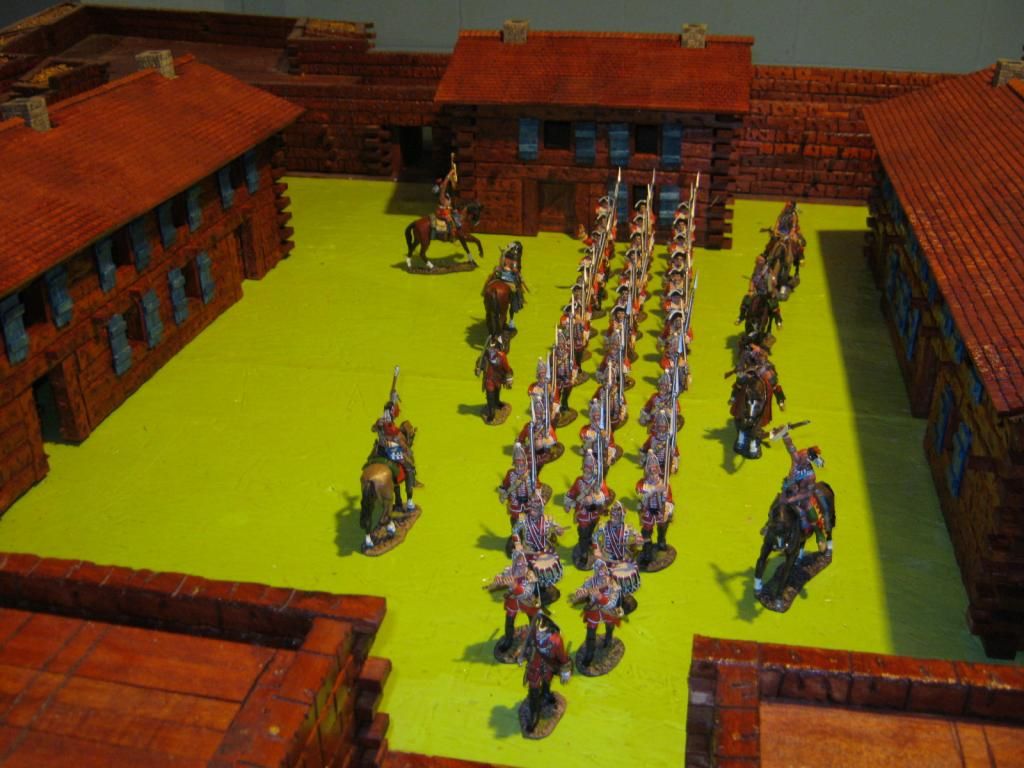

Thank my lucky stars for Mike Miller. Several years ago, he was kind enough to send me a container of Tacky Wax. I was trying to add a splash of color, but I think the Prussian blue shutters maybe a tad much.
Fort William Henry was constructed and first manned by New England colonial troops, not British regulars, so I went blue on the shutters ...... all 70 shutters are stained blue, but easily removed thanks to the Tacky Wax.


Many, if not most, of the grenadiers in the David Morier (Royal Collection, 1750-1751) have "gray" hair, but some clearly have brown hair of the same hairstyle. I have not read anything that suggests hair powder or wigs would be mandatory, but I would think the "gray" would not be used under campaign conditions.
A typical battalion would have 10 companies, one of which was a grenadier company, so 9 tricorner hat companies to 1 grenadier company. The light infantry company (specialized skirmishers) was developed during the French Indian War Period itself, so somewhat iffy there and likely did not exist in many regiments during the French Indian War. Eventually, the standard practice became 1 grenadier company, 1 light infantry company and 8 hat companies. During the French Indian War, the 80th regiment was constituted as a Light Infantry Regiment. A typical company would be anywhere between 35 and 80 men. If in an active campaign, the number would be towards the higher end. If peacetime, towards the lower end or lower (particularly when stationed in the British Isles). In North America, many regiments arrived from the British Isles at half strength and were built-up with new recruits after arriving in the colonies. Scottish regiments had very large company sizes, some apparently exceeding 100 per company.
At the Battle of the Monongahela (1755), the two grenadier company (44th and 48th regiments) went into battle with just under 70 men per each company.
In a campaign involving a good number a regiments, it was common practice to peel off all the grenadiers from each battalion and lump all the grenadiers into a "grenadier battalion." Essentially, this gave the commanding officer an extra battalion size unit to maneuver.
A typical battalion would have 10 companies, one of which was a grenadier company, so 9 tricorner hat companies to 1 grenadier company. The light infantry company (specialized skirmishers) was developed during the French Indian War Period itself, so somewhat iffy there and likely did not exist in many regiments during the French Indian War. Eventually, the standard practice became 1 grenadier company, 1 light infantry company and 8 hat companies. During the French Indian War, the 80th regiment was constituted as a Light Infantry Regiment. A typical company would be anywhere between 35 and 80 men. If in an active campaign, the number would be towards the higher end. If peacetime, towards the lower end or lower (particularly when stationed in the British Isles). In North America, many regiments arrived from the British Isles at half strength and were built-up with new recruits after arriving in the colonies. Scottish regiments had very large company sizes, some apparently exceeding 100 per company.
At the Battle of the Monongahela (1755), the two grenadier company (44th and 48th regiments) went into battle with just under 70 men per each company.
In a campaign involving a good number a regiments, it was common practice to peel off all the grenadiers from each battalion and lump all the grenadiers into a "grenadier battalion." Essentially, this gave the commanding officer an extra battalion size unit to maneuver.
mikemiller1955
Lieutenant General
- Joined
- Aug 3, 2008
- Messages
- 17,495
Ken...
it's really coming together...
I know you have been meticulous and patient with this fort...
all your research and work is paying off...
it's really looking spectacular!
it's really coming together...
I know you have been meticulous and patient with this fort...
all your research and work is paying off...
it's really looking spectacular!
Many, if not most, of the grenadiers in the David Morier (Royal Collection, 1750-1751) have "gray" hair, but some clearly have brown hair of the same hairstyle. I have not read anything that suggests hair powder or wigs would be mandatory, but I would think the "gray" would not be used under campaign conditions.
At the Battle of the Monongahela (1755), the two grenadier company (44th and 48th regiments) went into battle with just under 70 men per each company.
In a campaign involving a good number a regiments, it was common practice to peel off all the grenadiers from each battalion and lump all the grenadiers into a "grenadier battalion." Essentially, this gave the commanding officer an extra battalion size unit to maneuver.
Thanks for all those details.
Walt
Users who are viewing this thread
Total: 2 (members: 0, guests: 2)


